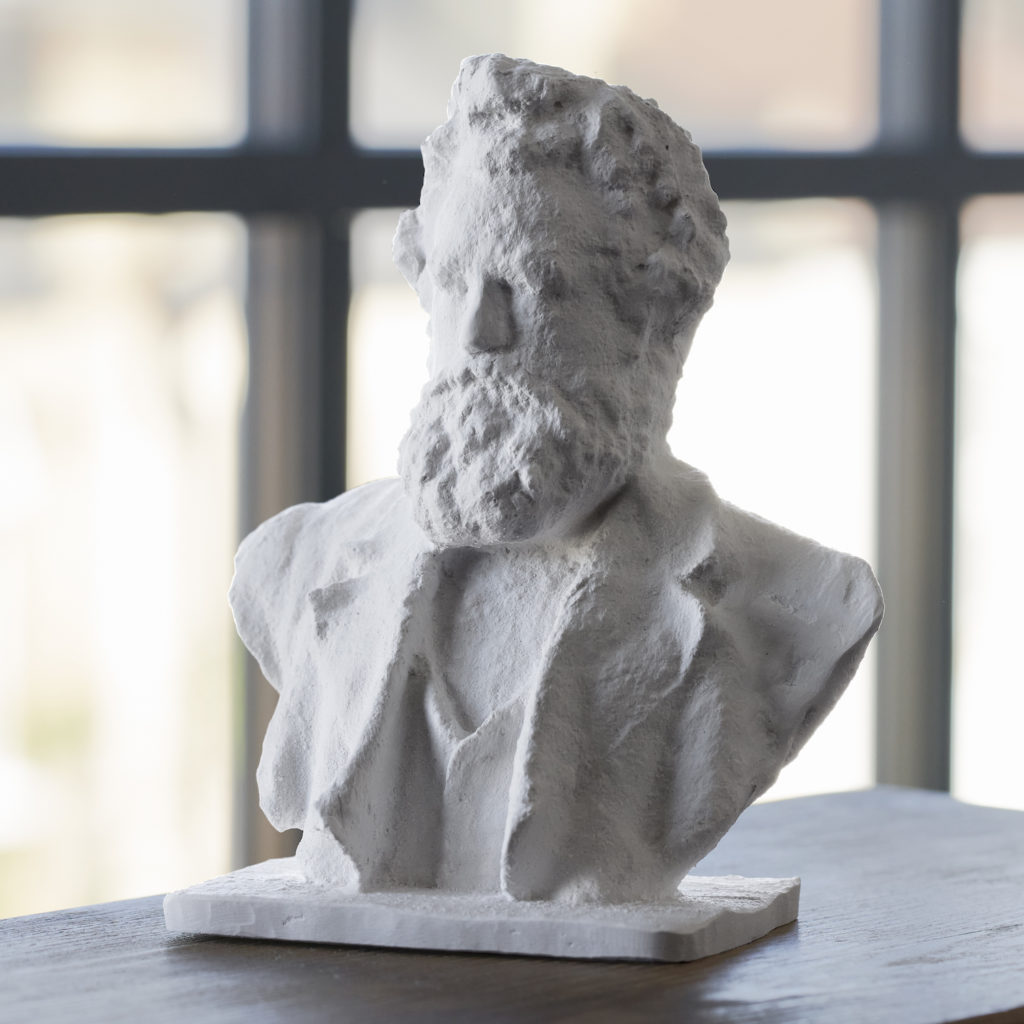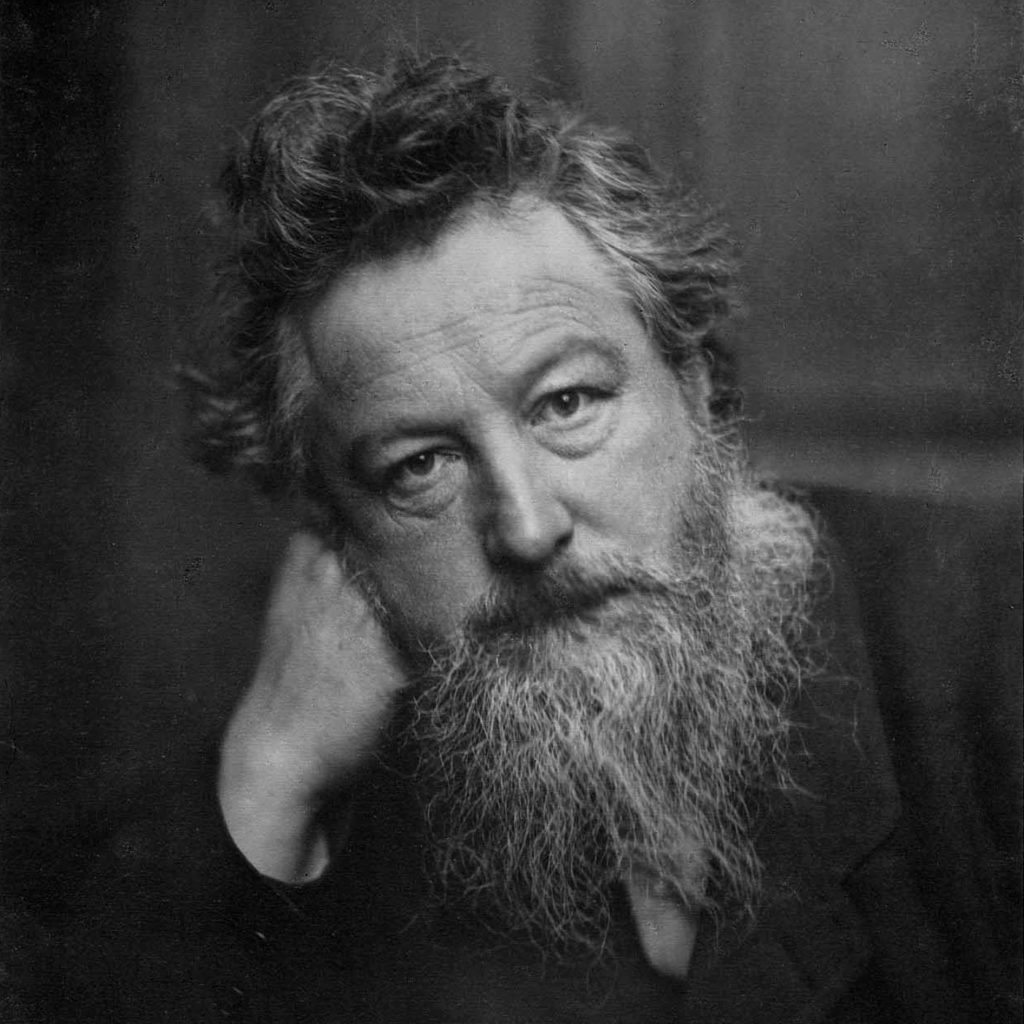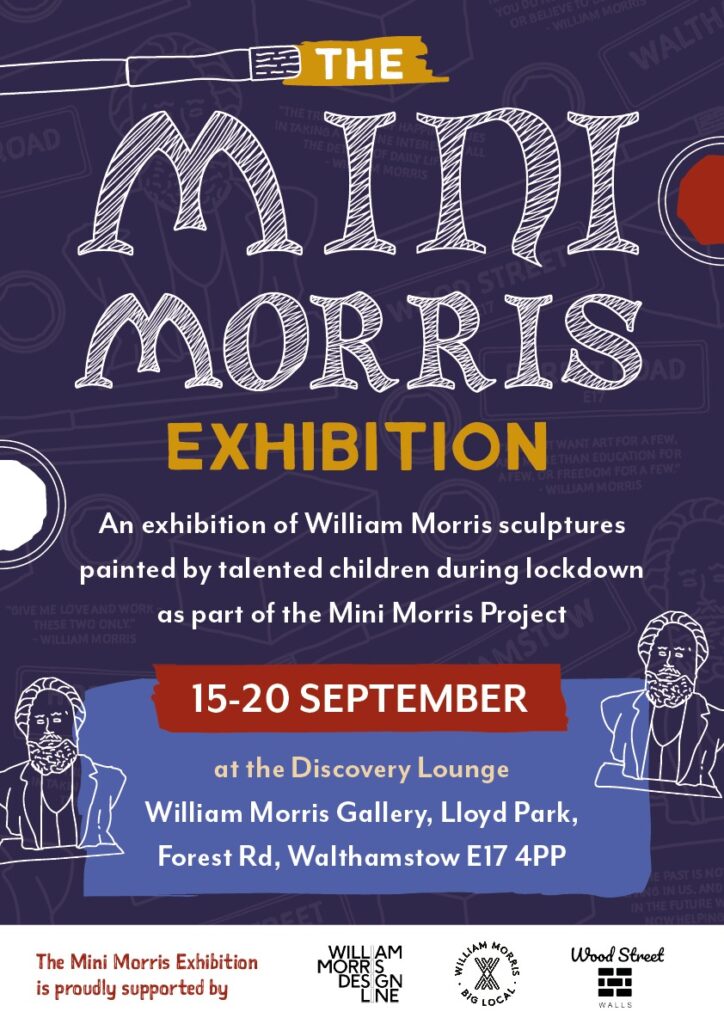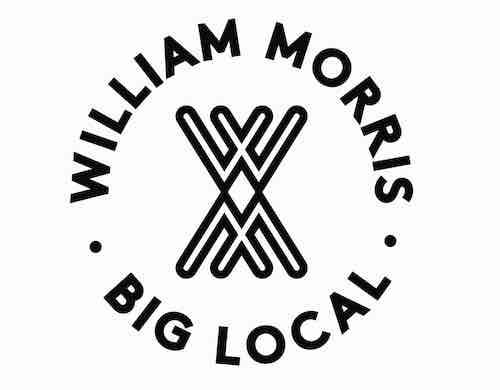What is the Mini Morris Project
The Mini Morris project is the work of local artist Sean Rodrigo. Using 3D printing technology, Rodrigo created 500 small-scale replicas of Henry Charles Fehr’s bust of William Morris, on display in the Gallery’s shop. Based on Morris’s belief that art should be “made by the people for the people as a joy to the maker and the user”, Rodrigo sent the busts to children across the Borough and invited them to create an image of Morris that appealed to their own creativity.
Morris was a polymath who influenced everything from science fiction writing to the environmental and building conservation movement to Modernist architecture. Through the proliferation of Mini Morrises throughout the homes of Waltham Forest, this project speaks to Morris’s profound impact on so much of our everyday lives and his enduring presence within the Borough.
3D printing is an emerging technology that is continually shaping the world around us. It has the potential to increase the public’s access to good design, and is an environmentally sustainable way of repairing and replacing broken objects. Its use adds to the debate about the role of machinery in craft skills, and the potential for new technology to expand our understanding of the creative process.
The art boxes were really well received. The teachers had the pleasure of seeing the kids faces light up! It was brilliant! – Green Leaf Primary
The families have been thrilled to receive these kits from our foodbank..it’s really helped the parents to keep their children occupied at home as at times of this pandemic as it is something that they can not afford ..having to chose between buying food or activities. – PL84U AL-SUFFA
The project in numbers
Happy children
ml of Plaster
ml of Non Toxic Paint
cm of recycleable bubble wrap
ml of Silicon
cm of 3d filament

Who was William Morris?
William Morris (Born 24 March 1834) was a revolutionary force in Victorian Britain: his work as an artist, designer, craftsman, writer and socialist dramatically changed the fashions and ideologies of the era.
On 24 March 1834 at Elm House (Modern Day Walthamstow Fire Station), William Morris was born to affluent parents Emma Morris (nee Shelton) and William Morris Snr, who by this point was a senior partner at brokers firm Sanderson & Co. His success with the firm led to the family moving, in 1840 to Woodford Hall in Essex, with their four young children. They had eight children in total, who survived until adulthood, and moved again to the Water House in Walthamstow, following William Morris Snr’s untimely death in 1847. By all accounts, Morris enjoyed an idyllic childhood growing up in the countryside, playing with his siblings and reading books as obscure as The Arabian Nights and John Gerard’s Herball, showing his early interests in both nature and storytelling. His natural ability in reading and writing went hand-in-hand with his developing interest in the wildlife and flowers surrounding him, and this love of the natural world would have a growing influence on his work.
Morris would become one of the most significant figures in the arts and crafts movement, a man of far-ranging creativity and knowledge. Morris founded his firm Morris, Marshall, Faulkner & Co in 1861 with Burne-Jones, Rossetti, Webb, and others. They were a group of like-minded artists and craftsmen responding to the shoddy practises of much of Victorian manufacturing. The firm fast became highly fashionable and much in demand, and it profoundly influenced interior decoration throughout the Victorian period, with Morris designing tapestries, wallpaper, fabrics, furniture, and stained glass windows. In 1875, Morris assumed total control of the company, which was renamed Morris & Co and it subsequently traded until 1940, its longevity a testament to the success of Morris’s designs.
I do not want art for a few any more than education for a few, or freedom for a few – William Morris

The Mini Morris Project has been made possible with the support of:
The William Morris Gallery, Gofundme supporter donations, Banks Carpentry, Industrial Plasters and Gail M Pearce Graphic Design.
Donate to the project
Mini Morris Exhibition
During September 15-20 the project took over the discovery lounge of the William Morris Gallery in Walthamstow to display and celebrate the completion of the project during the London Design Week and William Morris Design Line. By popular demand, the exhibition was extended a further week to allow over 1000 visitors through the exhibition over 12 days.
The project included 67 hand-painted models created by the children of Waltham Forest and design process exhibits including a live 3d printer creating a plastic model every day of the exhibition.

Buy a Mini Morris Sculpture
Mini Morris sculptures are now available for purchase via Etsy – for every model sold, one will be donated to a local primary school or foodbank.
Purchase on EtsyContact
or via contacting Sean at hello@minimorrisproject.co.uk
If you are able to donate please also fill in the form if you would like to request a Mini Morris Model
Share the project & your model
We’d love it if you wished to share the project with your friends and community!
When you’ve finished painting your model please share it with the world using #minimorrisproject. We are keen to see all your photos and videos and will share the results with the William Morris Gallery and on social media.





